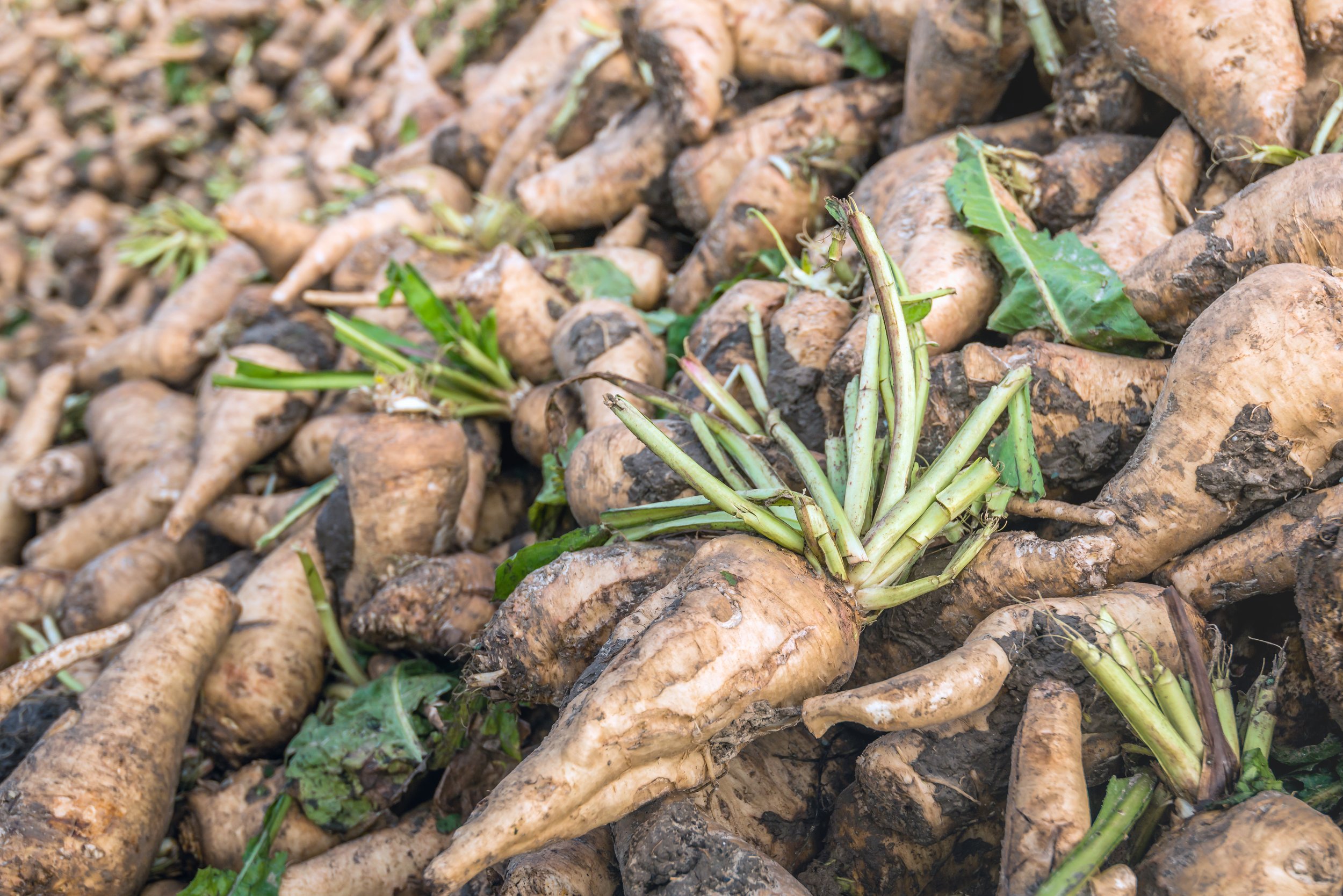The Incredible diversity of the Chicories
Cichorium intybus and C. endivia
Family: Asteraceae
COOL SEASON GREENS & ROOT CROPS
The chicories are a huge diversity of crops all produced from two closely related species, Cichorium intybus and C. endivia, which have been selected over the years to produce a wide range of flavors, colors and uses. In total there are 10 species of this genus, but these two species have been domesticated.
HISTORY
Cichorium intybus is native to western Asia, North Africa, and Europe. It lives as a wild plant on roadsides in Europe. The plant was brought to North America by early European colonists. It is also common in China, and Australia, where it has become widely naturalized. The plant seems to have been mainly domesticated by the Italians, who have elicited an incredible diversity from the plant including radicchio, Italian dandelion or catalogna, puntarelle, Belgian endive, pan di zucchero, zuccherina, spadona, and grumolo. Root chicoory is also derived from this species.
Cichorium endivia is believed to have originated in Egypt and Indonesia and cultivated in Europe since the 16th century. It is the species that brings us frisée and escarole.
USES
Most of the chicories are used as greens which are eaten raw, roasted, and many other preparations. Most have a pleasantly bitter flavor though some have been bred or cultivated to decrease the bitterness.
On many cultivars of C. intybus, the roots become significant, and are roasted and ground into a powder that is used as a coffee-like drink or added to enrich foods. Chicory root roasting occurred before coffee was introduced into Europe. But coffee shortages and bans increased its popularity—either intended to substitute as coffee, or to make coffee supplies last longer by adding to the bulk. Many European and Mexican brands of canned ground coffee contain added chicory.
PRESERVATION
The greens of all the chicories are best eaten fresh. Recently there has been some experimentation of pickling chicories.
GROWING
SEASON & PLANTING
Plant in full to part sun. These crops are cool season crops in our region. Seed is started as early as August and can be planted throughout the cool season. Plant starts, as soon as they are made available, can also be planted. Chicory root crops are best planted directly into the ground as the tap roots will want to plunge down into the soil and plant them as early in the season as you can to ensure enough time for root development.
There is a style of growing many chicories where plants are grown to a good size, and then transplanted into containers to bring inside for “forcing”. The tops are cut leaving the persistent root of the plant to form small heads that are usually brightly colored. Forcing takes some practice and experimentation in our climate but can be done.
SOIL & NUTRITION
Though the chicories do not need rich soil, amending our desert soils is a good idea, and these crops perform best in our standard vegetable garden beds.
The root chicories are much like other root crops like carrots and radishes—too much nitrogen will inspire lots of green grown but lack in root development. Plant root chicories along with the other root crops and ensure phosphorus but less nitrogen.
TEMPERATURE & SUN EXPOSURE
The chicories tend to do very well in southern Arizona and are usually amongst the last of the greens to bolt (go to flower). They are also fairly hardy and can take temperatures as low as the mid to low 20s°F. You will not need to cover these crops except during catastrophic frosts. Plants will bloom at the end of their cycle with beautiful blue flowers, a nice concession for the end of the season.
WATER
Keep plants evenly and consistently watered.
HARVESTING
On the greens, you can harvest outer leaves as the plants grow (cut-and-come-again), or you can grow plants to a mature head and harvest all at once.
Collect the roots once they have developed significantly, before the plant starts to bold.
WILDLIFE
Few insects show interest in chicories, except as pollinator plants when they bloom.
INVASIVENESS
Chicories haven’t escaped cultivation in the desert, but in other climates and at higher elevations, they have escaped as a roadside weed. They don’t seem to have invaded into established floras, preferring mostly disturbed soils.

Catalogna or Italian Dandelion

Frisée

Radiccio

Treviso

Belgian endive

Puntarelle

Escarole

Chicory flower

Chicory root

Grumolo Verde

Grumolo Rossa

Spadona Chicory

Radicchio Castelfranco

Pan di Zucchero

La Rosa del Veneto

